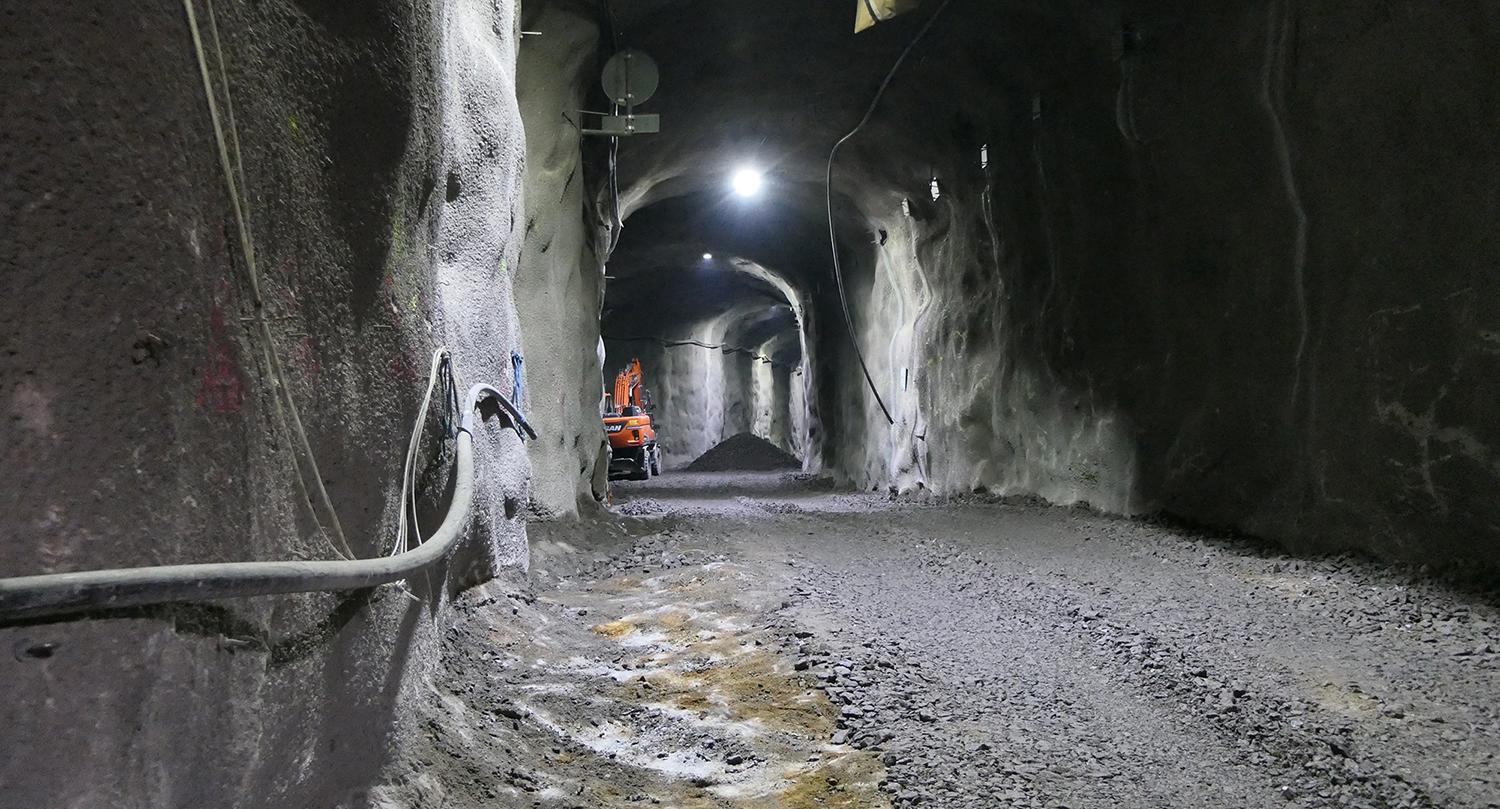Safety assessment of spent nuclear fuel disposal facility continued
Posiva Oy is building an encapsulation and final disposal facility for spent nuclear fuel in Olkiluoto. As this facility is a nuclear plant, the Radiation and Nuclear Safety Authority (STUK) supervises the construction of the facility using the same procedures as for nuclear power plants. Processing of the operating licence application and monitoring of construction activities continued at STUK during 2023. In addition, STUK planned future monitoring during use and assessed long-term safety.

The construction of the encapsulation and final disposal facility for spent nuclear fuel continued in 2023 and the facility is being prepared for commissioning. STUK supervised the manufacture and installation of systems and equipment as well as the trial runs. STUK also supervised Posiva as an organization: its safety culture, management, quality assurance, preparedness and monitoring indicators, operational development and personnel competence.
Planning of the facility’s monitoring during use was also relevant. In the future, STUK will supervise the quarrying of the new underground final disposal facilities, the manufacture and installation of final disposal canisters and bentonite buffer components as well as the organization’s operations throughout the service life of the facility, i.e. for about a hundred years.
Assessment of safety under way
STUK continued processing the licence application submitted by Posiva at the end of 2021. The Ministry of Economic Affairs and Employment, as the licensing authority, has requested STUK to issue a statement on the safety of Posiva’s final disposal facility by 31 December 2023. Since the processing of the operating licence application dossier is pending at STUK, STUK has requested the Ministry of Economic Affairs and Employment to extend the deadline of the statement to the end of 2024. The processing of the licence application is proceeding as planned at STUK, but due to the scope of the material and the processing of the material updates required from Posiva by STUK, the completion of the statement in its entirety takes longer than expected.
"This is not a dramatic delay. What is most important is that Posiva is able to ensure safety and demonstrate this ability to STUK and to society. There is no indication that this would not be the case," says Päivi Mäenalanen, Project Manager at STUK.
STUK will inspect and ensure that the encapsulation and final disposal facility has been constructed in accordance with the plans, that the nuclear facilities can be operated safely and that the personnel of the nuclear facilities have been trained in the safe operation of the facility. After receiving an operating licence, Posiva can start the final disposal of spent nuclear fuel that has already been generated and will be generated in the future at TVO's Olkiluoto and Fortum's Loviisa nuclear power plants. The Government will make the final decision on the operating licence of the disposal facility.
Long-term safety for a long time to come
STUK assesses the impact of decisions and solutions made at this moment over thousands of years to ensure that future generations are also protected from the harmful effects of radiation. In nuclear waste disposal facilities, it is important to demonstrate that the plant is safe even after its closure. This is called long-term safety. The long-term safety assessment is also an important part of STUK’s safety statement to be submitted to the Ministry of Economic Affairs and Employment.
STUK assessed the long-term safety justification submitted by Posiva last year as part of the licence application material. The review observations and remarks require Posiva to provide additional information about the initial state after closure and its deviations as well as the behaviour of the final disposal system over the long term. STUK also began assessing the transport and doses of radioactive substances in the biosphere. In addition to the assessment, STUK performed comparative analyses of Posiva’s calculations of the transport of radioactive substances from the final disposal facility to the habitat in the form of possible emissions.
Supervision using Finnish methods
Before the spent nuclear fuel is finally disposed of out of the reach of humans and living nature, it must be measured accurately and reliably. It is necessary to make sure that the spent nuclear fuel enclosed in the final disposal canisters matches the information provided about it, in other words, that the canister includes all of the fuel rods declared. There must also be a way to keep the measurement results safe so that they will remain accessible and understandable to people even after several years.
The Radiation and Nuclear Safety Authority and the Helsinki Institute of Physics have jointly developed new ways of controlling spent nuclear fuel. These innovative methods are needed before the world's first spent nuclear fuel disposal facility can be commissioned. The projects have designed measurement equipment and built software for the analysis of the measurement results as well as developed inspection criteria for the safeguards of spent nuclear fuel in their final disposal.
The methods used to measure the nuclear fuel to be disposed of are Passive Gamma Emission Tomography (PGET) and Passive Neutron Albedo Reactivity (PNAR). The former gives an accurate cross-sectional view of the fuel, showing the individual active fuel rods. The PNAR method provides additional assurance that the nuclear properties of the fuel are what they should be.
"It is very natural that new methods are being developed specifically in Finland, as this is the first place in the world where the final disposal of spent nuclear fuel begins. Other countries will be able to use the developed methods once they reach this stage in their own projects,” says Riina Virta, researcher at STUK.
Learn more
- STUK needs more time to assess safety of nuclear waste disposal facility (stuk.fi)
- Final information of disposed spent nuclear fuel with Finnish methods (stuk.fi)
- Final disposal facility monitoring reports (stuk.fi)